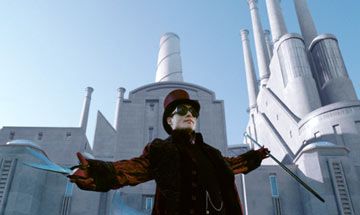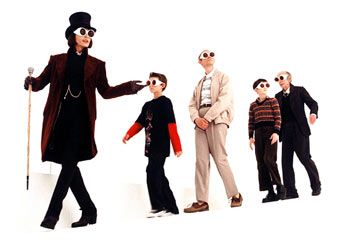Charlie and the Chocolate Factory
チャーリーとチョコレート工場
貧しい家に、少年チャーリーは失業中の父親と母親、そして寝たきり4人の老人で暮らしていた。彼のおじいさんは昔、近くにある世界一大きなチョコレート工場で働いたことがあった。お菓子作りの天才ウィリー・ウォンかは工場の持ち主であった。彼は五枚のゴールデン・チケットを用意して、チョコレートからチケットを得た子供たちは彼の工場を参観することができると公表した。ラッキなチャーリーは最後のゴールデン・チケットを得た。おじいさんとともに工場に行った。ほかの8人の子供と親は皆人に嫌がられる人だった。そして、工場で不思議なことは次から次へと起こった。。。

原作を読んだことはないが、ティム・バートンとジョニー・デップのコンビに期待をかけたからその映画を見た。ティム・バートンは一貫した風格を保つ。濃い色彩、風変わりの人物、非現実のストーリ、優越な想像力で夢想的世界を作り出した。子供向けの世界というより、ブラックユーモアが溢れる「大人の童話」だ。このスタイルに見慣れない友達は「なぜそんな仕方で悪い子を懲らしめるのか」と聞いた。私もその場面は子供にとって少し怖くないかと思ってる。にもかかわらず、私は歓声を上げる焼ける人形を見るとき、何となく痛快な気分になった。
小賢しい子供たちを連れて行くたびに、同じ顔をしているウンパ・ルンパたちは自作の歌とダンスを上演した。面白い装いとスタイルはやや古風で、なんのバンドを思わせた。しかし、四回も繰り返して、クリーシェイになってしまった。しかも、その意味深い歌詞は訳されなかったから、やや残念だと思う。 
映画中のやんちゃな子供たちは悪い手本として、良い価値を伝える。チャーリーの家庭は貧乏だが、家族の皆は楽しそうに生きていた。チャーリーのおかけで、ウォンかも長年振りの父親と仲直りをした。それを見ると、観客もほっと安心した。
「ビッグ・フィッシュ」ほど胸を打たれないが、音楽と映像とジョニーの演技を楽しんでもけっこう満足だろう。





